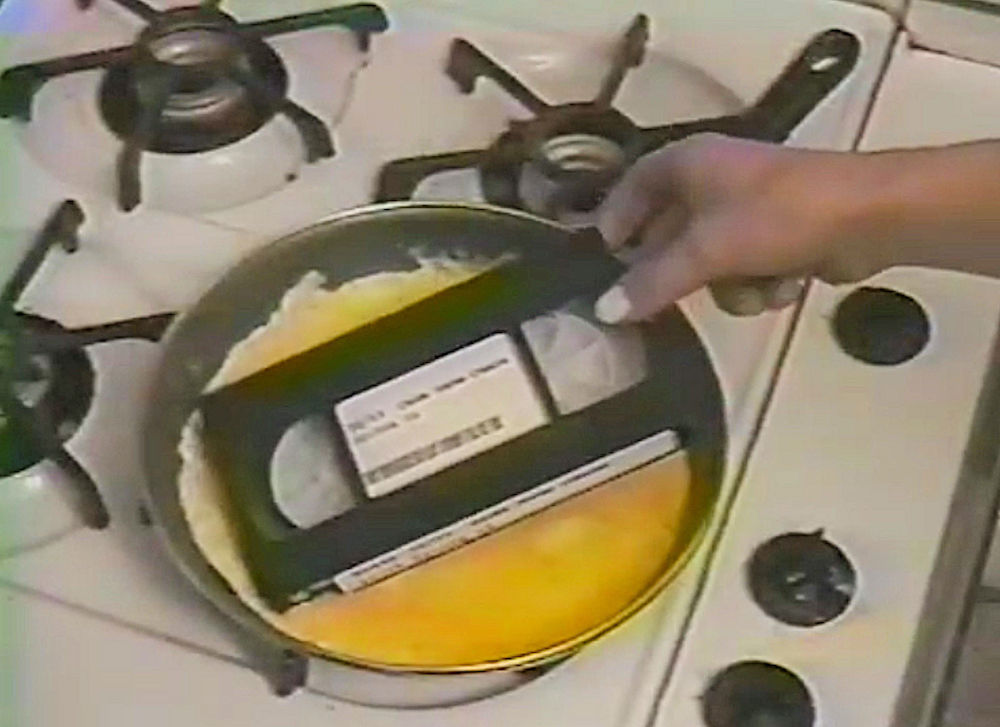Before the advent of online videos, the only way to take your moving images outside of the underground film and video art context was to get them on television. Chris Burden made commercials, and performance artists infiltrated The Gong Show, but the real hidden treasures found their way to cable access.
As a compromise for their monopolization, cable companies allowed anybody who wanted to make a show to have access to the local airwaves. MoMA recently screened a one-hour edit of one of the loopiest shows to ever grace New York television: Cash from Chaos (later known as Unicorns and Rainbows after the station started receiving complaints, and they had to pretend to be another show).
This show was the brainchild of Alex Bag and Patterson Beckwith. It screened in Manhattan late-night slots between 1994 and 1997. In a 2014 interview with MoCA, Bag explained her frustration with the hierarchy of “video art” and the art teachers who drew a hard line between high and low culture. She recounts a list of things that weren’t allowed by her video art instructor. In short: NO FUN. Video art was meant to be serious and high-minded. Performing a repetitious activity in denim was Art. Using costumes and references to popular culture were not.
It’s strange to look back on that era and realize how arbitrary those rules were. Another aspect to cable access as video art is that the people working in this medium couldn’t sit around and wait for virtuous inspiration to strike. Every single week there was a deadline to fill up the allotted time slot, which added urgency to the proceedings.
An interesting thing about doing a cable show was the air of legitimacy that it added to the players involved. In one episode, they scored an invitation to an event in Central Park, where BMW was promoting a tie-in with the latest James Bond film. After they filmed themselves taking the tabs of LSD that arrived in a collage mailed from Switzerland, they discovered that they had been invited to drive a BMW around the park “as fast as they can go.” There was a rather large police presence to keep the road clear, and knowing that the driver (filmed from the passenger seat) was frying on acid gave the viewer a sense of complicity in something genuinely transgressive.
One motif in these shows was to call product consumer hotlines to ask questions, which transcended the realm of prank calls by virtue of an earnest purpose. Another running motif consisted of wild interactions with actual VHS videotapes, which were struck with guitars, cooked in omelets and thrown into the street where cars ran over them.
The players became endlessly inventive as the need to fill their weekly half-hour loomed. In this bygone era, editing videotapes for mashups was achieved by wiring two video machines together, which, from the perspective of a time when telephones now include editing software, feels archaic and visceral.
Although the MoMA video compilation was only up for two weeks, it was great to see this chaos in a high-art context. You can catch bits of the show posted to YouTube, so it’s likely to have a long afterlife. Perhaps the endless new streaming services’ need for content will bring us a 21st-century version of cable access. Hope springs eternal.


